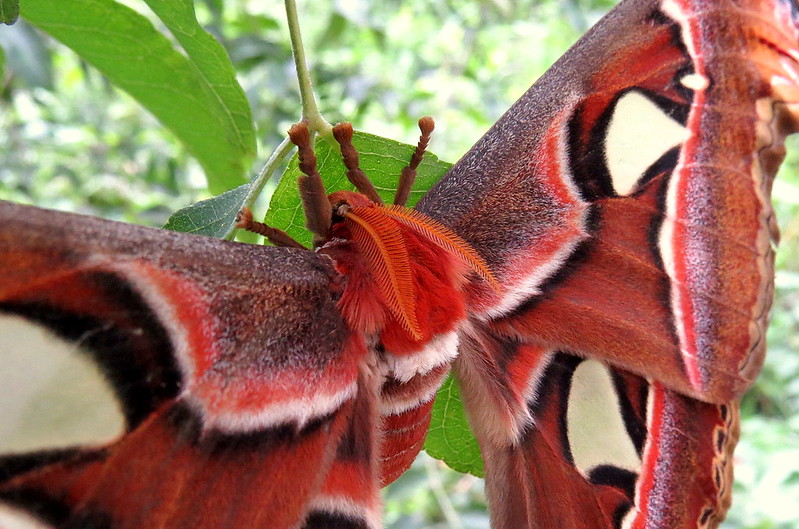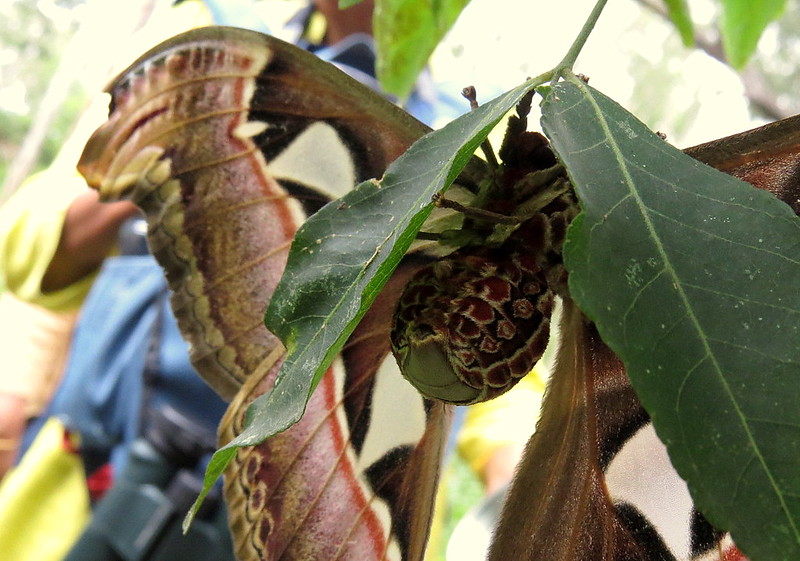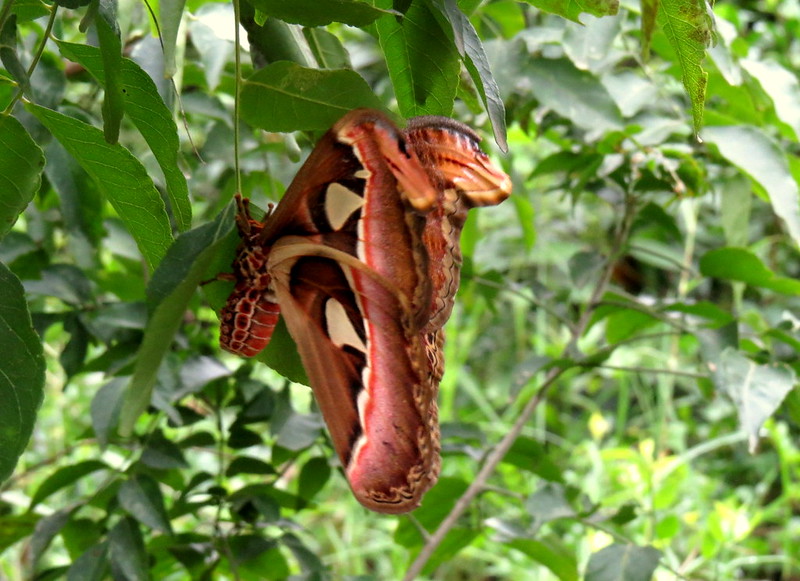The Atlas Moth
We have a huge variety of moths in the world, but one of the most spectacular is the
The Atlas Moth, which is found in the tropical and subtropical forests of Southeast Asia, and is common across the Malay archipelago.
The Atlas moth was held to be the largest moth in the world, before the
Hercules Moth relegated it to second place. However, it still remains one of the most spectacular moths one can see!
We were very lucky to see two of these moths on a nature walk at Turahalli State Forest, on 120817.
These Saturniid moths have wingspans reaching over 25 cm (9.8 in). Females are appreciably larger and heavier than the males.
Atlas moths are said to be named after either the Titan of Greek mythology, or their map-like wing patterns. In Hong Kong the Cantonese name translates as “snake’s head moth”, referring to the apical extension of the forewing, which bears a more than passing resemblance to a snake’s head.
Here are the beautiful, feathery antennae of the moth:
In India, Atlas moths are cultivated for their silk in a non-commercial capacity; unlike that produced by the related silkworm moth (Bombyx mori), Atlas moth silk is secreted as broken strands. This brown, wool-like silk is thought to have greater durability and is known as “fagara”.
Females are sexually passive, releasing powerful pheromones which males detect and home in on with the help of chemoreceptors located on their large feathery antennae. Males may thus be attracted from several kilometres downwind! The females do not wander far from their chrysalis.
After mating, the female lays about spherical eggs,
I was equally struck by the beauty of the moth’s thorax.
Another amazing fact…the adult moth has no mouth parts, and cannot eat! Adult Atlas m only live for a few days…finding mates and reproducing within that time. Dusty-green caterpillars hatch after about two weeks. Theyfeed voraciously on the foliage of certain citrus and other evergreen trees.The caterpillars are adorned with fleshy spines along their backs which are covered in a waxy white substance. After reaching a length of about 115 millimetres (4.5 in), the caterpillars pupate within a papery cocoon interwoven into desiccated leaves. The adult moths emerge after about four weeks.
Here’s the moth whith its wings folded:
We were extremely lucky to see not one, but two moths in the wild…it’s an experience that will stay with us for a lifetime!





